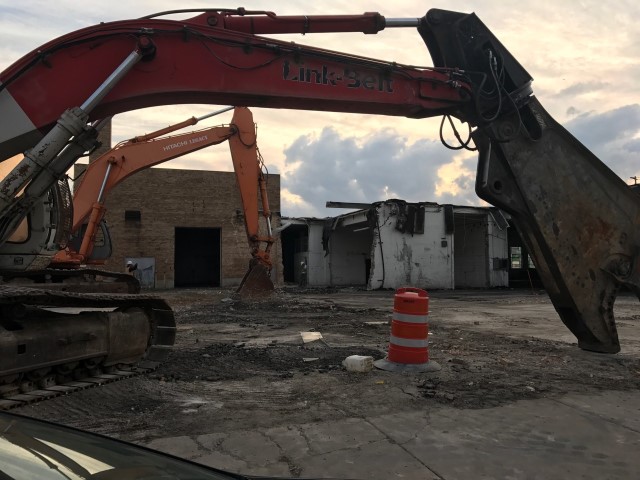Greyfield development: Benefits and how to get started
Greyfields are commercial or retail sites, such as shopping centers, strip malls and big-box stores, that have been abandoned after a period of disinvestment. Unlike brownfields, greyfields are not necessarily contaminated, which makes them attractive candidates for redevelopment projects seeking to revitalize the surrounding community. Below, we discuss the benefits of greyfield development, some crucial aspects of a greyfield development project and how to get started by partnering with environmental and engineering consultants.
Greyfield development: Benefits and crucial aspects
Stakeholders considering greyfield development must understand the point of redeveloping an abandoned site is to put the property back into use. To be effective, the redevelopment plans should have an end use that fits the site's conditions, rather than simply recreate the site's previous use. The benefit of redeveloping a greyfield lies in how its reuse can bring about a broader community renewal. That is why municipal officials should keep a flexible approach toward greyfield development and think outside the box to discover end uses that bring maximum community benefit.
Benefits of greyfield development
Here are some of the key ways a community benefits from greyfield development:
- Reallocation of land: Smart development of greyfield sites prevents the consumption of additional greenfield space. Reusing the infrastructure of an obsolete, nonproductive urban site for high-density residential and mixed commercial use provides increased property tax to local governments and a more pleasant environment for residents.
- Boost to local employment: The construction and redevelopment of greyfield sites creates jobs for the local community. This includes not just construction work but also temporary and permanent employment in retail, residential property management and more. Economic development can further revitalize the greyfield site and improve the quality of life in the neighboring communities.
- Increase in retail demand: A greyfield site's primary asset is its location, which offers unique opportunities to implement mixed-use principles related to zoning, housing, urban design and public services. With businesses moving to redeveloped greyfield sites, the surrounding community witnesses economic growth with an increase in retail demand on surrounding properties.
Crucial aspects of greyfield development
To realize the benefits of greyfield development and revitalize the local community, a developer needs to consider the following aspects before starting a greyfield development project.
Environmental Site Assessments
Although a greyfield is usually not perceived to be environmentally contaminated, the decaying building materials and older on-site infrastructure still might pose risks, like lead-based paint and asbestos exposure. Depending on the building's age and prior usage, universal wastes, including pesticides, batteries, mercury-containing equipment, aerosol cans and lamps, may also be found.
To complete environmental due diligence for greyfield sites, developers still need to perform an Environmental Site Assessment (ESA) of the property, especially a Phase I ESA per ASTM standards, to avoid liability issues and regulatory uncertainty in the later stages of the project. ESAs are also critical in determining the presence of contamination from adjoining properties.
Keep in mind that if your due diligence uncovers hazards or contaminants, remediation funding may be available. Working with a team of experts makes it easier to adapt to these issues as they occur.
Land surveys
Land surveying is a detailed process that helps gather and analyze data to locate property lines and map the ideal layout. When buying a commercial property such as a greyfield, a stakeholders needs detailed information on the historical records of ownership. They will also need documentation on boundaries, easements, topography and other features. Boundary surveys, aerial mapping, American Land Title Association, or ALTA, surveys and topographic surveys, among others, provide the comprehensive information you need to evaluate the site and investigate the possibility of adverse rights. Advanced surveys through 3D laser scanning and Matterport scanning help developers create 3D models of the greyfield property to determine the building envelope and develop site plans through computer-aided designs.
Compliance with federal, state and local regulations
The Lead Renovation, Repair and Painting (RRP) rule requires developers to implement lead-safe practices during greyfield development. Hiring lead-safe certified contractors to work on greyfields can help projects comply with the RRP rule and protect workers and those who live nearby from lead exposure.
As former retail or commercial shopping sites, greyfields often are found in highly visible locations at the corners of busy roads or highways. During redevelopment, which can last from a year to a year and a half, the transportation routes around the neighboring community may be affected. To avoid causing excess traffic delays, developers need to get approvals from local regulatory and transportation authorities for egress, entrances and other routes along the way to the greyfield site.
Sourcing funding
Financing a greyfield development project is challenging. The appropriate funding solution - or solutions - depends on the size of the community and its needs, site conditions, plans and potential strategies for redeveloping a greyfield. Federal and state tax credit programs encourage investments into these challenging properties. Additionally, state-specific financing tools for greyfields, along with Community Development Block Grants and the EPA's revolving loan funds, can help finance redevelopment of the underused sites to revitalize communities.
Developers and municipalities often lack the in-house expertise and the professional know-how to perform the ESAs and land surveys and manage grants, which are necessary to finance a greyfield development project. A cross-functional team of engineers and environmental consultants can help provide end-to-end assistance with redeveloping greyfields.
Initiating greyfield development in your community
At Fehr Graham, we help developers and municipalities conduct due diligence on land transactions and ensure that greyfield redevelopment projects are correctly and thoroughly analyzed through customized ESAs, redevelopment plans and waste management. Our experts work with you to conceptualize, design and plan greyfield development projects and address regulatory issues and redevelopment needs. We can also help secure funding. Our expertise in structural and civil engineering and environmental services has helped communities address challenging land development projects and improve the quality of life and environment in the communities where our clients live and work.
To know more about how Fehr Graham can help your community with greyfield development, Contact Us or give us a call at 815.394.4700.
Collaborative, Insightful, Results-Driven Solutions
Fehr Graham provides innovative engineering and environmental solutions to help improve the lives and communities of our customers.


